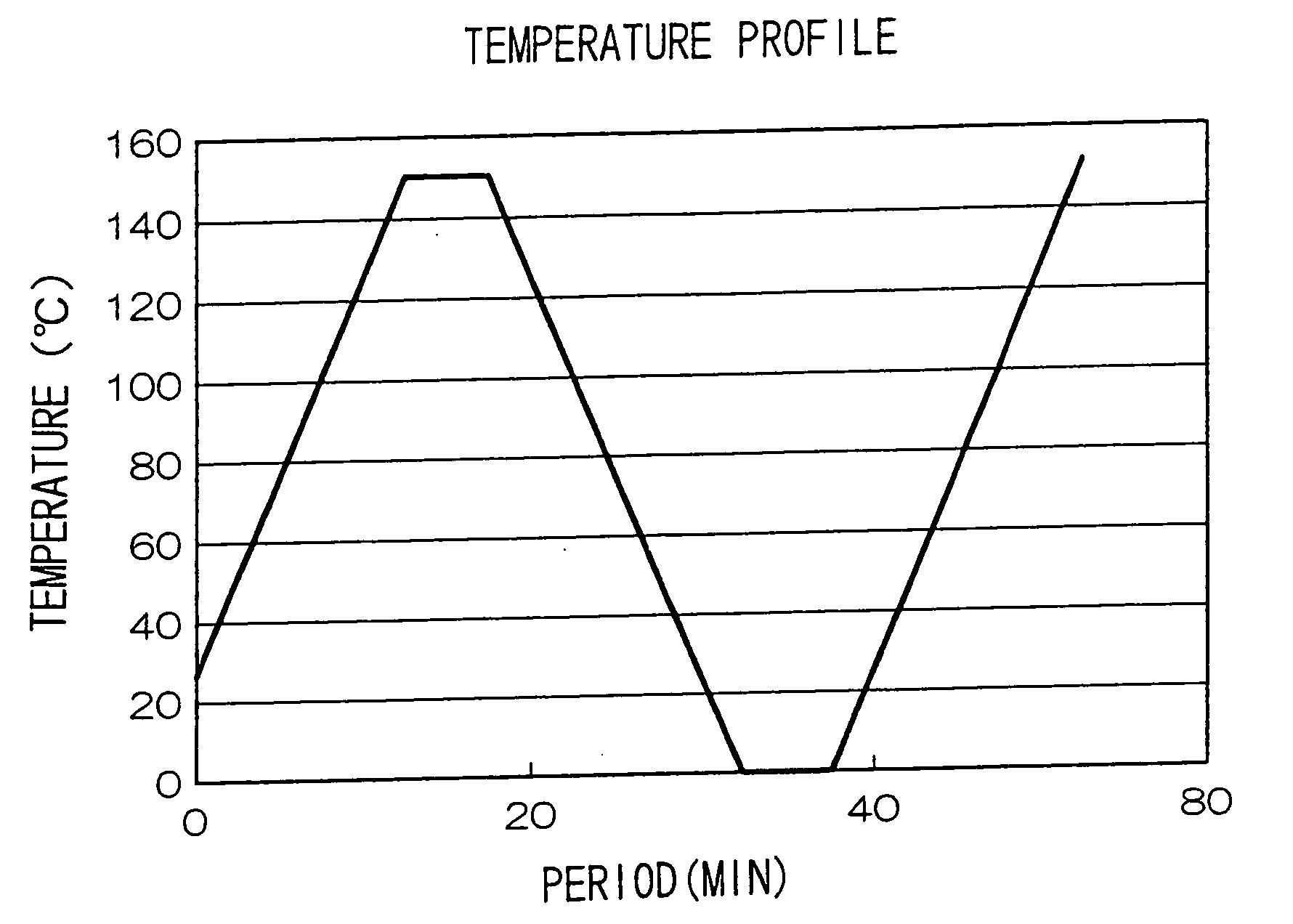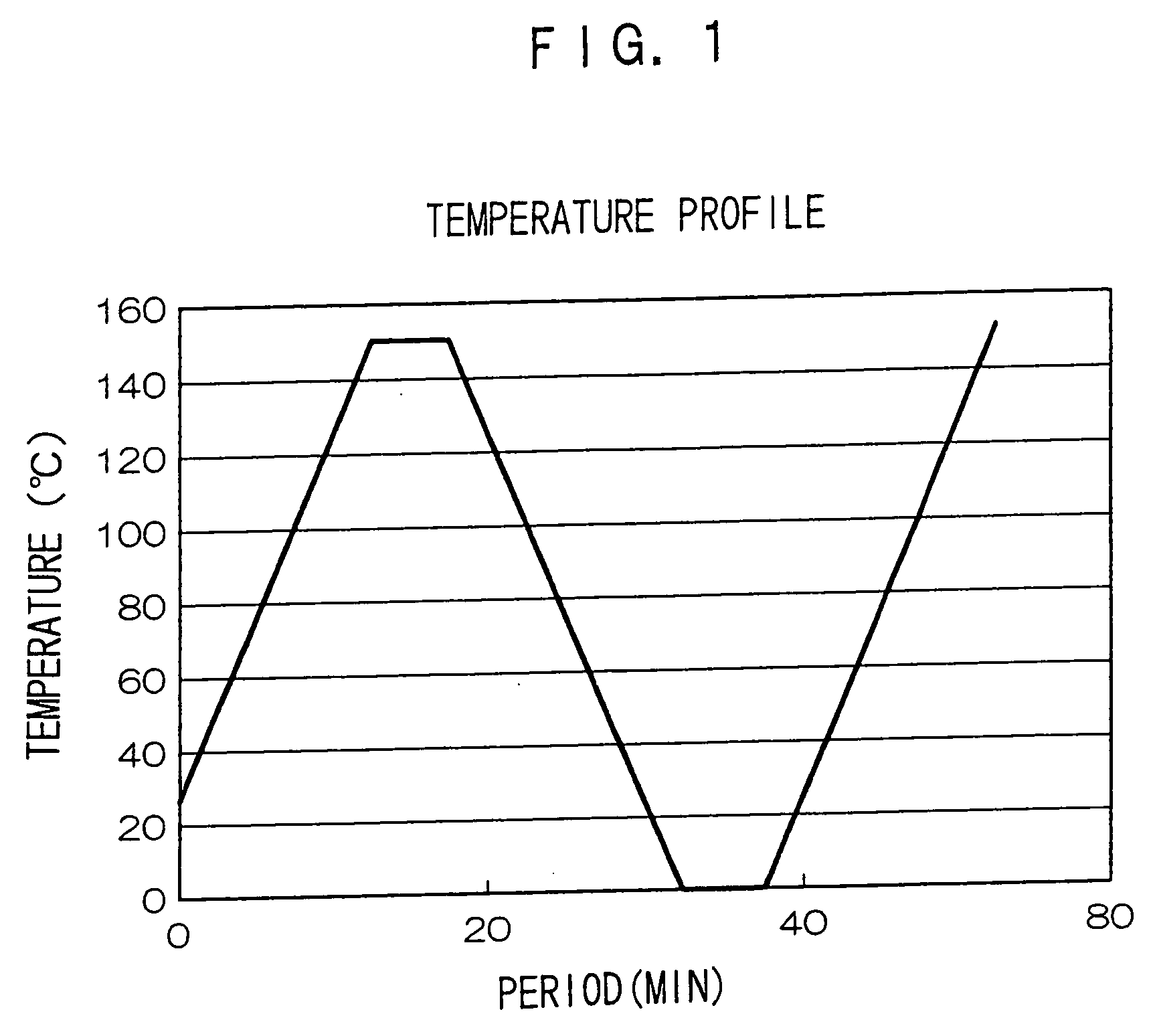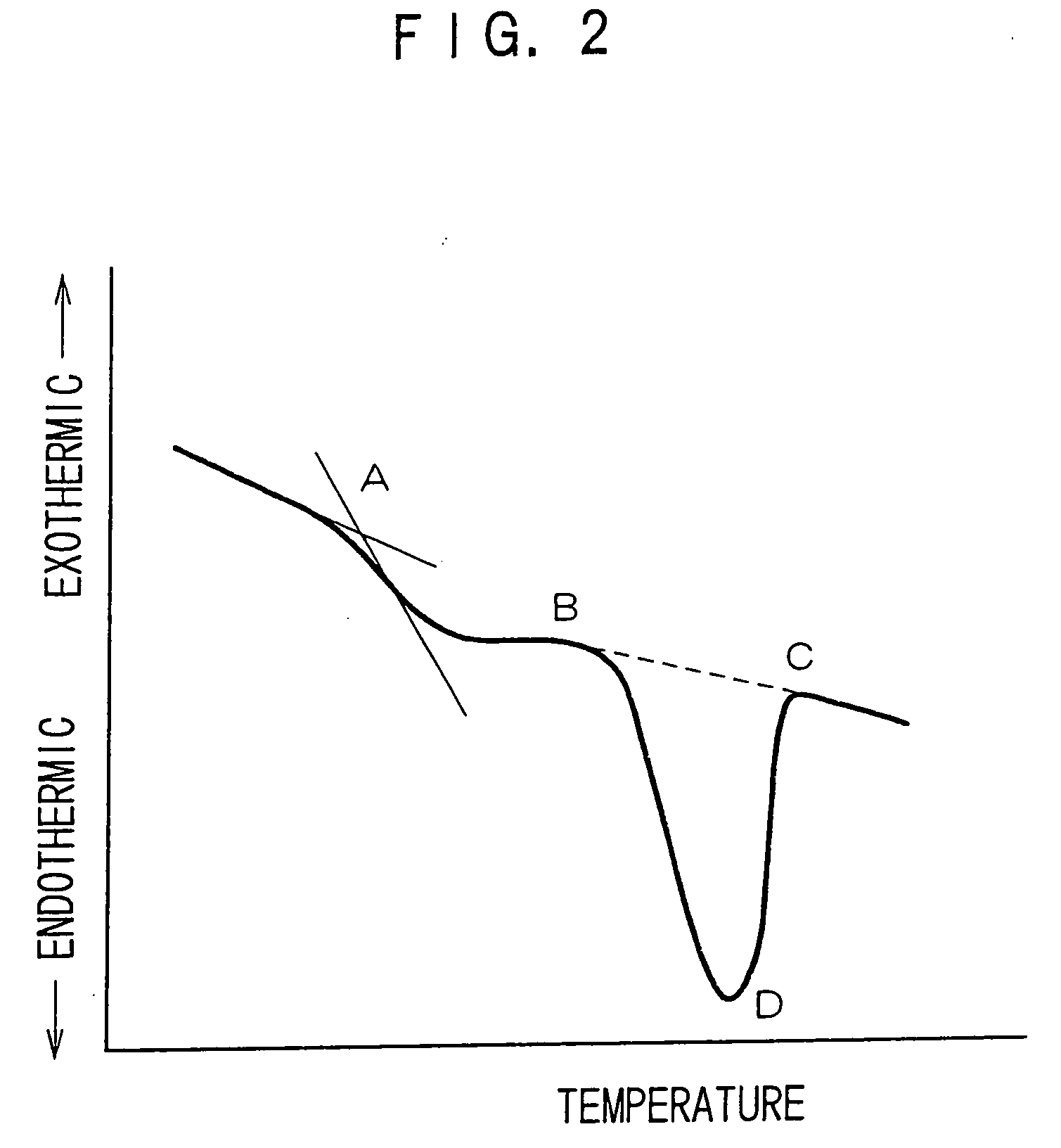Toner for developing electrostatic images, electrostatic image developer, and image-forming method
a technology toners, applied in the field of toner for developing electrostatic images, electrostatic image developers, image-forming methods, can solve the problems of reducing the glass transition point of toner particles, difficult to preserve the storability of toners, and increasing the cost of resin production, so as to achieve the effect of superior toner storage life and image storage stability
- Summary
- Abstract
- Description
- Claims
- Application Information
AI Technical Summary
Benefits of technology
Problems solved by technology
Method used
Image
Examples
example 1
Evaluation of the Storage Stability of Toner
[0241] The storage stability of toner is evaluated by measuring powder aggregating tendency (toner blocking resistance). The powder aggregating tendency is determined by using a powder tester (manufactured by Hosokawamicron) equipped with three sieves respectively having openings of 53, 45, and 38 μm from the top, placing 2 g of accurately weighed toner on the 53-μm-opening sieve, vibrating the sieves repeatedly by a width of 1 mm for 90 seconds, determining the mass of the toner on the respective sieves after vibration, and calculating according to the following Formula (5).
Powder aggregating tendency=[(Mass of toner on 53-μ-opening sieve)×0.5+(Mass of toner on 45-μm-opening)×0.3+(Mass of toner on 38-μm-opening sieve)×0.1]×100 / (Mass of total toner used) (%) Formula (5)
[0242] For evaluation, toners previously left in an environment at 45° C. and 50% RH for about 24 hours are used, and the measurement is performed in an environment of 25°...
examples 2 to 5
[0260] Evaluation is performed in a similar manner to Example 1, except that the toners and the electrostatic image developers shown in Table 5 are used replacing the toner A and the electrostatic image developer A of Example 1.
[0261] Results are Summarized in Table 5.
PUM
| Property | Measurement | Unit |
|---|---|---|
| Temperature | aaaaa | aaaaa |
| Particle size | aaaaa | aaaaa |
| Melting point | aaaaa | aaaaa |
Abstract
Description
Claims
Application Information
 Login to View More
Login to View More - R&D
- Intellectual Property
- Life Sciences
- Materials
- Tech Scout
- Unparalleled Data Quality
- Higher Quality Content
- 60% Fewer Hallucinations
Browse by: Latest US Patents, China's latest patents, Technical Efficacy Thesaurus, Application Domain, Technology Topic, Popular Technical Reports.
© 2025 PatSnap. All rights reserved.Legal|Privacy policy|Modern Slavery Act Transparency Statement|Sitemap|About US| Contact US: help@patsnap.com



